Situated in Staindrop in Darlington, Raby Estate, under the custodianship of Lord and Lady Barnard, is preparing to open its biggest restoration project in decades. The project, known as ‘The Rising,’ is set within the grounds of Raby Castle and comprises the restoration of three listed buildings, the creation of two more, the reimagining of gardens, and the addition of new retail and dining experiences. It will open up incredible spaces, many never seen before by the public.
Claire Jones, head of leisure and tourism at Raby Castle, speaks to blooloop about the project's scope and its goals.
The Rising project at Raby Castle
A key part of ‘The Rising’ development project is the restoration of Raby Castle’s 18th-century Coach House and Stables. The Grade II* listed buildings, designed by the architect John Carr in the late 1700s to house the family’s heritage carriages and horses, reflect the Vane family’s long-standing passion for horses. As part of the restoration, the buildings’ original features have been repurposed to create a unique heritage space with retail and exhibition areas.
The Couch House, featuring a free-to-enter exhibition, showcases Raby Estate’s rich past with an audiovisual projection onto an 8 ft bespoke carved oak table. This was sourced sustainably from the Estate and crafted by local artisan furniture maker Anthony Nixon of Barnard Castle.
The neighbouring Tack Room displays restored items from Raby’s equine history. This includes saddles, bridles, carriage sets and a traditional travelling chest, which belonged to Henry Vane, 2nd Duke of Cleveland, when he served in the 75th Regiment of Foot. Meanwhile, an AV presentation by Lord Barnard, shown in the Drying Room, offers insight into the work of the wider Estate.
A career in hospitality
The project takes its name from the Rising of the North of 1569, an unsuccessful bid by Catholic nobles to depose Queen Elizabeth I and replace her with Mary, Queen of Scots.
Jones says: “The restoration of this beautiful heritage building will ground visitors in Raby’s fascinating history. Key to its development was the safeguarding and celebration of its original features whilst repurposing it for an exciting future. We want to embrace and celebrate Raby’s unique appeal, creating memorable visitor experiences for all. We look forward to welcoming guests to this unparalleled heritage setting for the opening in spring 2024.”
Even as a child, Jones always had a project on the go, she tells blooloop, outlining the path that brought her to the sector and to this role:
“Nothing has changed in later life. I thrive on the fast-paced nature of project work. I like to think I have a talent for identifying where a business can flex and respond to maintain its relevance in the market.”
She began her career with a progressive leisure and hospitality company, then moved into the luxury hotel sector.
"I was then happy to combine my love of the outdoors with my passion for hospitality through work for country estates. I helped owners diversify their portfolio of land and property to include hospitality and leisure businesses.”
She also worked freelance, advising owners with limited sector knowledge on how to design their buildings to become five-star hospitality venues and attractions.
Raby Castle
“Raby is, without doubt, one of the most impressive intact castles in the North of England,” she comments. “Built in the 14th century by the powerful Neville family, it has a long history. Home to Cecily Neville, mother of two kings of England – Edward IV and Richard III – it was also the scene of the plotting of the Rising of the North and a Parliamentary stronghold during the Civil War.
"Originally moated and accessed via a drawbridge, the Castle was built as a palace-fortress. The approach to the castle is particularly beautiful. Its towers appear and disappear amongst the trees of the surrounding parkland with its ornamental lakes and herds of deer. The exterior with medieval towers, terrace and embattled walls dates back to the 11th Century.”
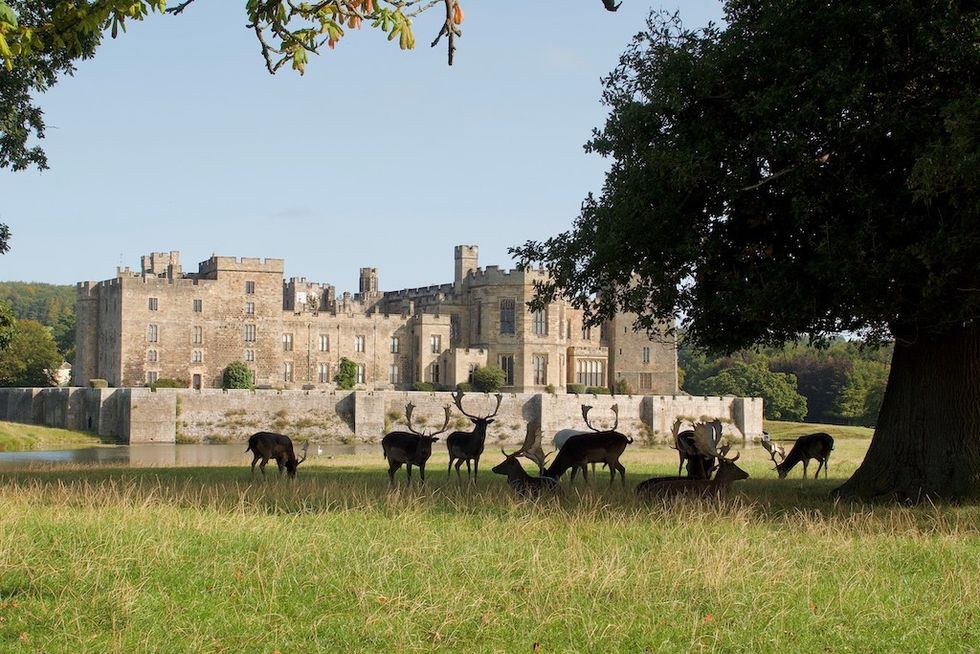
The Nevilles, responsible for building the 14th-century castle, continued to live at Raby until 1569. Then, after the failure of the Rising of the North, the Castle and its lands were forfeited to the Crown. The 6th Earl of Westmorland was the last of the Nevilles to live at Raby Castle. He fled from Raby in 1569 after The Rising of the North and died in exile in Holland in 1601.
In 1626, Sir Henry Vane, the Elder Member of Parliament and an important member of Charles I’s household, purchased Raby from the Crown. The Vane family still owns Raby; the present owner is the 12th Lord Barnard.
A family-run business
Turning to the wider Estate and its composition, role and work today, she adds:
“ The Raby Estate is a family-run business that has operated in County Durham and Shropshire for many years. Raby is unique in many ways, with diverse landscapes, vast woodland, heritage buildings, and acres of agricultural land."
The Estate operates its own in-hand farm. This covers substantial areas of land between Piercebridge and Staindrop in County Durham. The arable lands focus on regenerative farming techniques alongside livestock enterprises, including the Raby Longhorn herd.
Conservation is paramount throughout the estate. This is evident through its involvement in numerous environmental endeavours, such as restoring peatlands and enhancing curlew habitats. The woodlands are also key, with the forestry team prioritising sustainable harvesting and regenerative management techniques.
The Estate has a number of significant and much-loved heritage buildings within its portfolio. She explains:
“As part of a long-term restoration programme, we are renovating and repurposing many of these historic buildings, retaining heritage features by using traditional skills. The Rising scheme is another example of this. We're restoring these incredible heritage buildings for future generations to enjoy and to continue the legacy here at Raby.”
See also: How Blenheim Palace is leading the way for sustainable attractions
A blank canvas
Addressing ‘The Rising’ development project, she describes the concept from inception to realisation.
“Raby really was a blank canvas when I first met Lord and Lady Barnard and learned more about their aspirations,” she says. “Despite having been a visitor attraction for many years, it had been operating very quietly. Many of its important heritage buildings were not accessible to the public.”
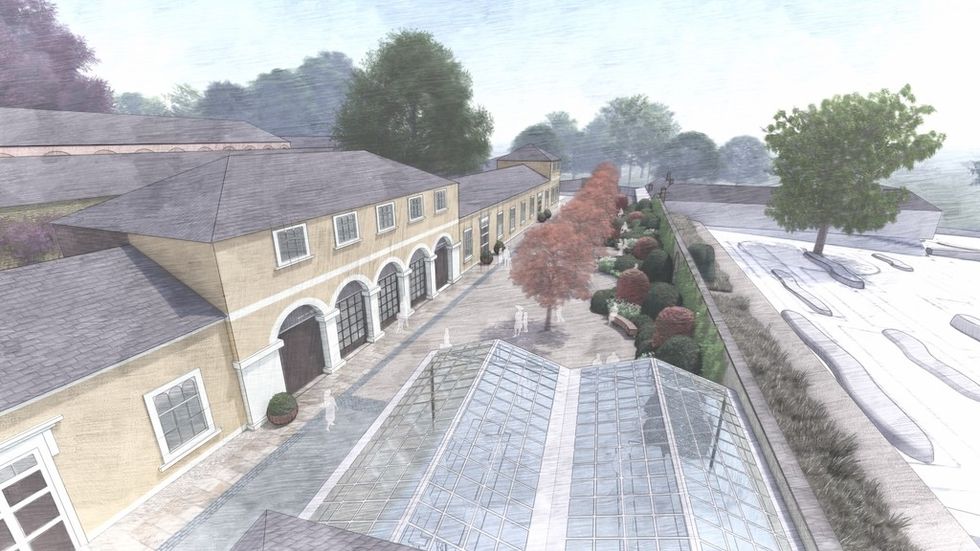
Lord and Lady Barnard were keen to share Raby with others and could see its potential as a leading leisure destination. The Rising delivers two key objectives. The first is to celebrate its steady increase in popularity over recent years and to provide expanded and improved visitor facilities for guests to use:
“Raby needed to remain relevant to its audience. We recognise that visitors want so much more from a visit to a historic house and garden these days. They want great service, beautiful surroundings to enjoy a drink or lunch and excellent shopping experiences, events and exhibitions. The Rising seeks to deliver each of these within a truly breathtaking setting.”
The objectives of Raby Castle's The Rising project
The second objective was to restore and find new purposes for those important heritage buildings which had fallen out of use over the years:
“The Rising comprises many equestrian buildings, such as the Riding School and Dutch Barn, which were no longer used for their former purpose. They needed thoughtful restoration to allow us to breathe new life into them."
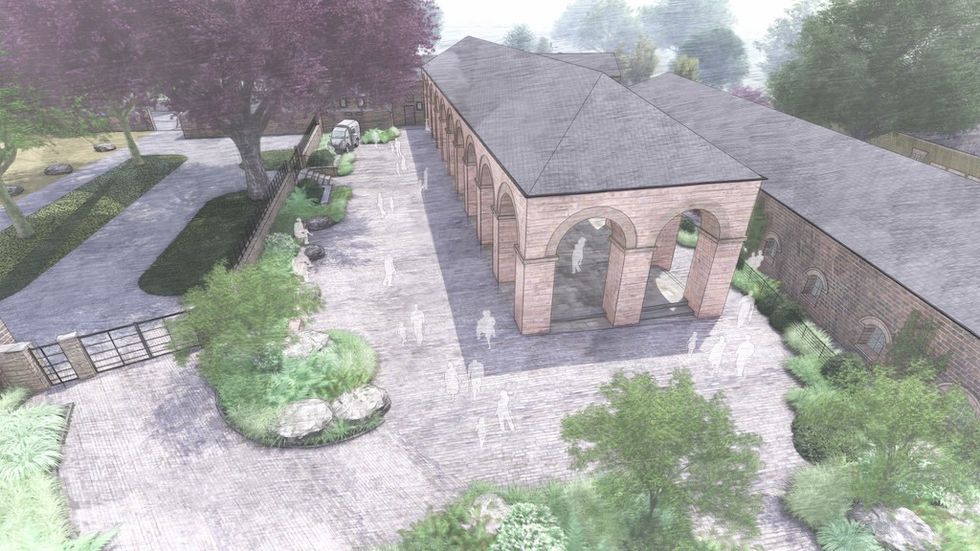
"Lord and Lady Barnard have a commitment to opening up Raby more widely and providing an inclusive and accessible destination for our local community and visitors from further afield to enjoy. We believe that if people love and cherish Raby as we do, it will sustain the business for the future, allowing us to look after this wonderful place for future generations to enjoy.”
The first phase of the drive to transform Raby Castle and encourage new visitors included opening up the castle grounds and creating a bespoke and immersive adventure play area, The Plotters’ Forest, in the Christmas tree plantation. This opened in 2022 and was created by CAP.Co, the adventure play specialist.
“Then we moved onto the main phase of The Rising.”
What's in a name?
The development’s name combines Raby’s rich history as the home of one of Britain’s most notorious plots, the Rising of the North, with a promise of growth, energy and ambition.
“Everything throughout The Rising has been meticulously thought through,” Jones comments. “It will be a place where heritage is celebrated, where beauty lies in its simplicity, and where the welcome is always genuine. Visitors will be able to spend a full day in the grounds, embracing our ‘eat, see and shop’ ethos. Think acres of unexpected elegance, complete with heritage buildings, reimagined gardens, stylish shopping and locally sourced food."
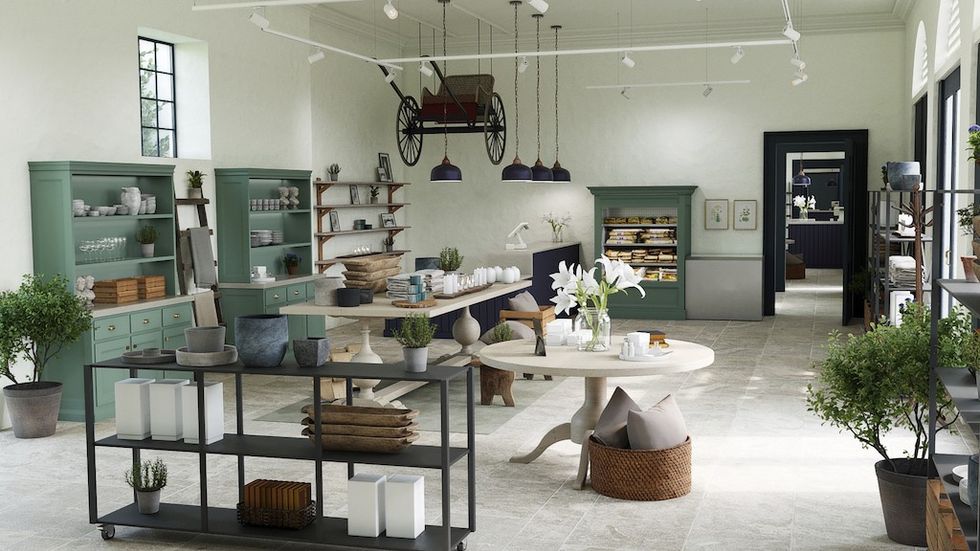
"It will truly be a destination like no other.”
The Coach House and Stables broaden Raby’s scope in terms of reaching new audiences, and becoming an attraction as well as a heritage destination. She explains how it fits into Raby’s strategic plans, enhancing the existing attraction:
“Raby Castle is a wonderful place to visit. But The Rising will take the offering to another level and offer so much more on a bigger scale. The Rising will have a significant impact on the local tourism economy. It will also draw an audience from much further afield.”
A quality visitor destination
County Durham has often been overlooked as a leading visitor destination. Raby seeks to address this, offering a destination to rival some of the UK’s best-known locations:
“We know that this development will be a hugely welcome addition for visitors from further afield and within our local community. And we are incredibly proud of our home team and all the specialist suppliers that have helped make this happen. The Rising has created many new jobs and supported the local economy, through our ‘local wherever possible’ ethos.”
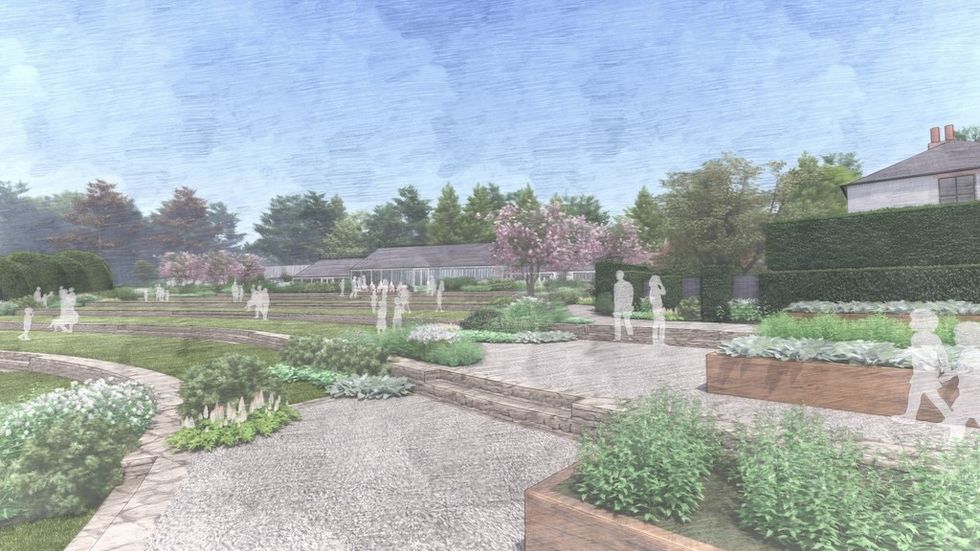
The Rising also allows Raby to try new things; she adds:
“It lets us reach those audiences looking for something a little different in a heritage setting. In particular, the Coach House and Stables have a unique role to play within this new dynamic scheme, reflecting the Vane family’s long-standing passion for horses but also educating visitors about Raby’s past and the wider Estate through an immersive audio-visual exhibition.”
A new retail space adjacent to the exhibition space will offer a curated selection of homeware and artisan gifts displayed on reclaimed furniture from across the estate:
“Raby’s philosophy is local wherever possible,” she says.
A milestone for Raby Castle
This is the largest development at Raby Castle for generations:
Three heritage buildings have been thoughtfully restored and repurposed, while two new structures have been created. The Walled Garden (which comprises the East, West, and Formal gardens) has been completely remodelled. Beautifully landscaped grounds meticulously tie all of the surroundings together.
It spans over 24 acres, allowing the visitor experience at Raby to expand extensively:
"It offers so much to explore, see, and do, plus well-designed spaces for hospitality and events.”
Two heritage buildings, the Dutch Barn and the Riding School, previously hidden from view, have been opened up as event spaces. The nearby Coach House and Stables, showcasing original 18th-century features, have been repurposed to tell the story of the castle’s history and introduce the sights, sounds and landscapes of the Raby Estate.
Facing challenges
Outlining the project’s challenges, Jones says:
“Developments are hard work and stressful at times. But I get a real adrenaline rush from the tough deadlines and coordinating so many elements to come together all at once.
"We obtained our planning permission in December 2020, so the first few months of construction were during the pandemic period, which brought a unique set of challenges to this project. That said, longer lead times, labour shortages, and the challenges of designing over Zoom were all met with our usual Raby resilience and spirit. In fact, recruiting our own in-house construction team meant we could be much more agile and flexible, adapting wherever needed to keep the project on track.”
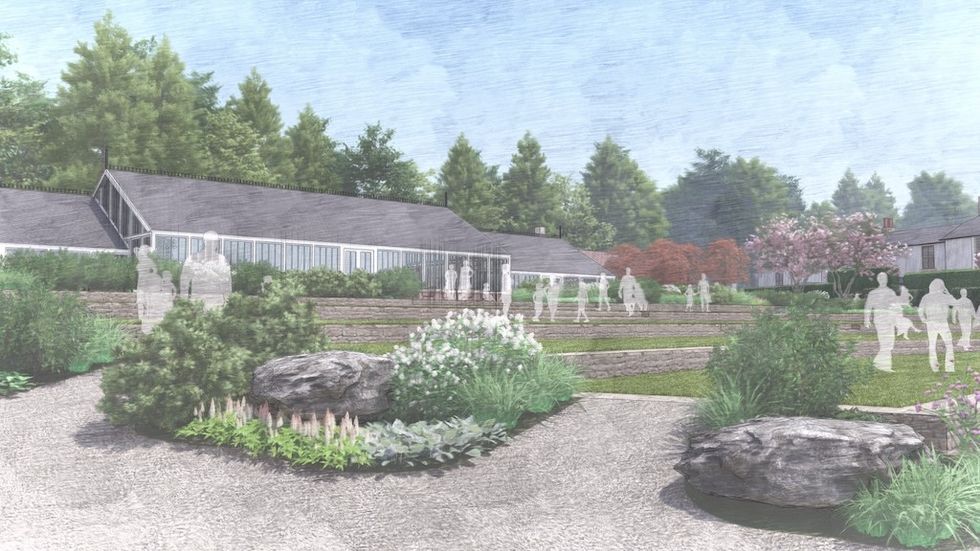
A key aspect involved the remodelling of the 18th Century Walled Garden:
“Lady Barnard appointed world-renowned garden designer Luciano Giubbilei to work with her on the tremendous design. A close working partnership has formed between them. Lady Barnard’s creative vision and Luciano’s reputation for transforming spaces across the world has resulted in an inspirational design.”
Additionally:
“The transformation of the East Garden includes the creation of a unique nine-tiered grass amphitheatre for outdoor events, alongside romantic woodland walks and a perennial flower garden.”
The Formal Garden boasts a series of mazes alongside the historic Raby yew hedge, while the West Garden is productive. It combines raised beds for growing seasonal vegetables, a greenhouse for displaying hothouse plants, and a cut flower garden.
Reaching a diverse audience
Concerning the target market, she says:
“The beauty of Raby Castle, Park and Gardens is its appeal to so many audiences and people with different interests. Our varied programme of events means there is always something new and exciting to see. We have exhibitions, theatre, music, mindfulness and creative workshops.
"Our new spaces mean that events can run all year round, both indoors and outdoors. That encourages a diverse audience to return throughout the seasons. The Riding School also allows us to attract those who are looking for somewhere to host parties, conferences, exhibitions and all kinds of special events alongside The Dutch Barn – which is an architectural attraction in its own right."
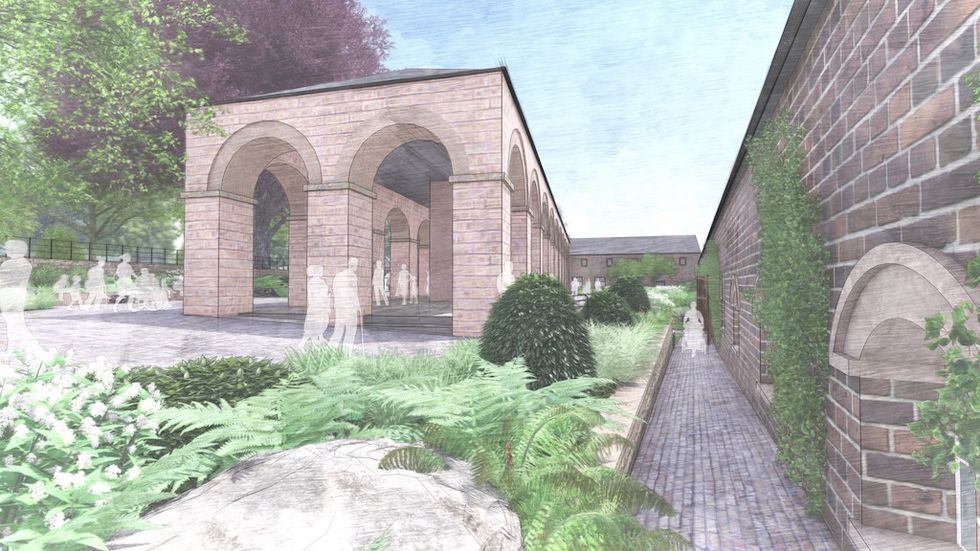
"History lovers will delight in a tour of the castle. It is the most remarkable building with rich stories and an exquisite collection to admire. Meanwhile, garden enthusiasts will revel in the remodelled Walled Garden and its seasonal beauty throughout the year.
"However, for the majority of visitors, Raby will simply be a breathtaking setting for meeting up with friends and family for a long walk, a delicious lunch or a spot of shopping. Raby delivers whatever you wish for in a perfect day out.”
The new visitor experience at Raby Castle
Outlining the new visitor experience step-by-step, she says:
“The expanded car park facilities offer a more structured arrival experience, with the addition of designated bays for those with additional needs, EV charging points and orientation information. At the entrance of the site, everyone will receive a warm welcome from a member of the Raby team to start their visit in a positive way.
"From there, visitors can visit The Plotters’ Forest for an immersive play experience. Or they can head into the heart of the development to the Round House. Our team will be waiting with information and advice about making the most of your day at Raby.”
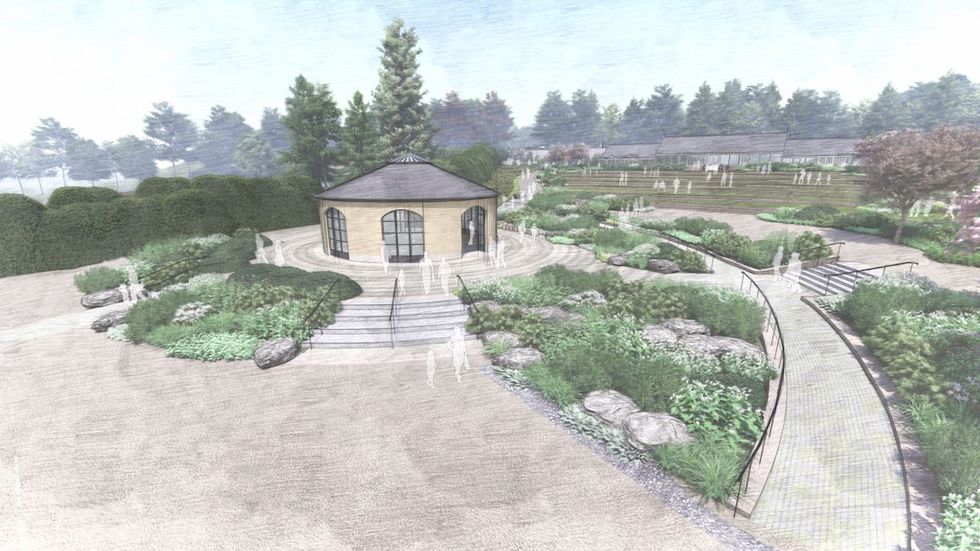
The Round House is a new circular building containing a ticketing and information reception. It also houses self-service ticket facilities and touchscreen information portals.
“It allows visitors to book tickets, choose dining options, and keep up to date on upcoming events and exhibitions. They can discover all that is available for them to enjoy at the Park, Gardens and Castle as well as the wider Estate, including High Force Waterfall. The Coach House will be waiting to tell the story of the castle’s history. And there’s a newly designed glasshouse, The Vinery, which stands on the footprint of the original Vine House.”
The Vinery Café seats over 200 people. It will offer locally sourced ingredients from across the estate. Diners can also enjoy panoramic views across the High Vinery Garden and to Raby Castle beyond.
Beautiful gardens
She continues:
“The historic 18th-century Walled Garden has been remodelled, creating a stunning five-acre romantic scheme celebrating the existing heritage features, including the famous sculptural yew hedges.”
The Walled Garden comprises the East, Formal, and West Gardens. There is also a new grass amphitheatre in the lower part of the East Garden. This will host a programme of outdoor productions.
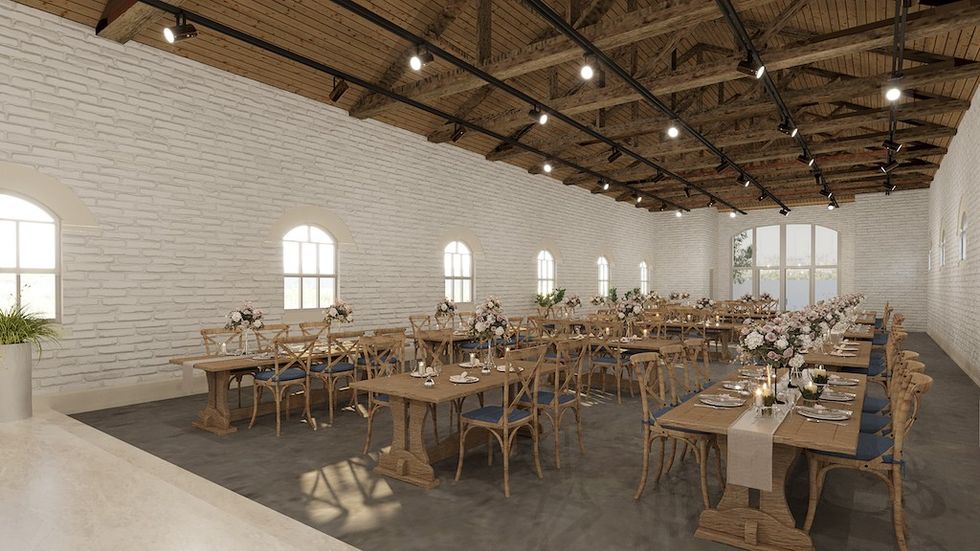
The historic listed Dutch Barn and The Riding School, which reflect the castle’s strong equine past, have been restored using traditional skills and materials sourced from the estate. They will host a range of events throughout the year:
“Landscaped gardens designed by award-winning North Yorkshire-based landscape architect Alistair Baldwin tie the surroundings together. Visitors can stroll through beautiful planting along the Duchess’ Walk, sit and admire the view from the High Vinery garden, or gaze in wonder at the majestic arches of the Dutch Barn.”
Telling a story at Raby Castle
Concerning the narrative flow, she explains:
“We want to provide visitors with a unique experience set within the scenic countryside of the North of England. The buildings, whether new or old, are linked with the use of reclaimed materials running through paving and walls. This gives a seamless experience immersed in history."
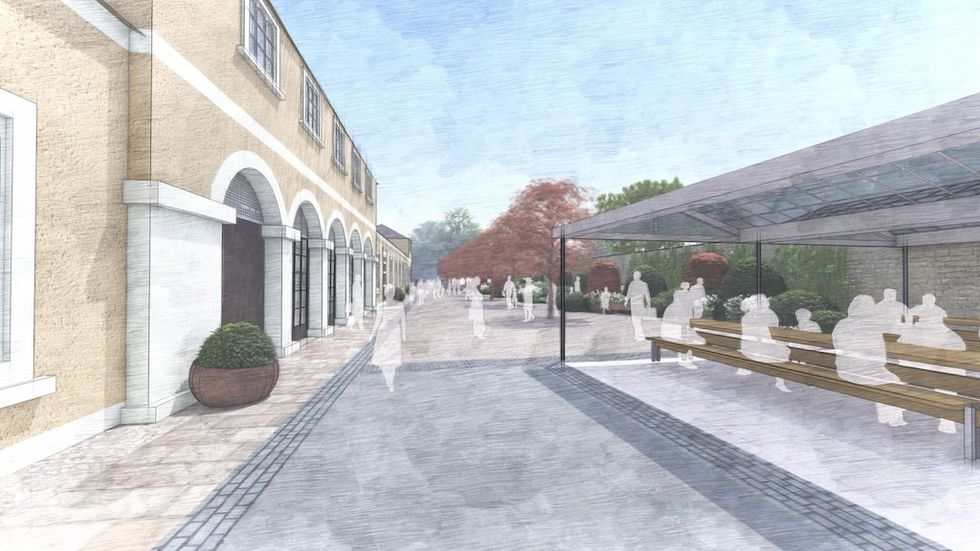
Buildings have been restored in thoughtful ways that continue to tell the story of their former uses.
"History is at the heart of this scheme. But so, too, are energy, colour and, most importantly, the people at the heart of this remarkable estate. We have also tried to ensure that everything throughout The Rising will be tied together by beautifully landscaped meandering walkways.
"We are keen to emulate the sense of the old Raby village that would have existed here centuries ago.”
A community destination
The construction phases and the long-term operation of The Rising have created a number of jobs, strengthening greater engagement with local communities. Raby has continued the tradition of supporting younger generations by providing apprenticeships, placements and training programmes.
New volunteering and work experience opportunities have been created within Raby Estate itself. External relationships with agencies such as Durham County Council, Visit Co Durham, Historic England, and the North Pennines National Landscapes also ensure Raby continues to support its local communities.
Raby’s philosophy of ‘local wherever possible’ is evident in the retail offerings:
“We offer high-quality, artisan gifts only available at Raby, and have a new retail manager to oversee the shop. Raby is fortunate to retail a range of its own estate products including Longhorn beef, venison, rapeseed oil and more.”
Securing Raby Castle's future
Raby’s appeal, Jones contends, is unique:
“Raby is a destination like no other. It has an innate spirit and personality it hard to replicate. Part of that comes from the people who live and work in this special place. But it also comes from the buildings, steeped in stories from hundreds of years of use.
"The Rising will provide a unique experience – creating a destination with a difference in the north of England – where visitors from every generation can discover County Durham’s thrilling past and promising future. There will be something for everyone to enjoy. We hope that this wide appeal will, in turn, help to support the North East as a leading tourist destination.
"It will also help to secure Raby Castle’s future as an important resource for the local community.”




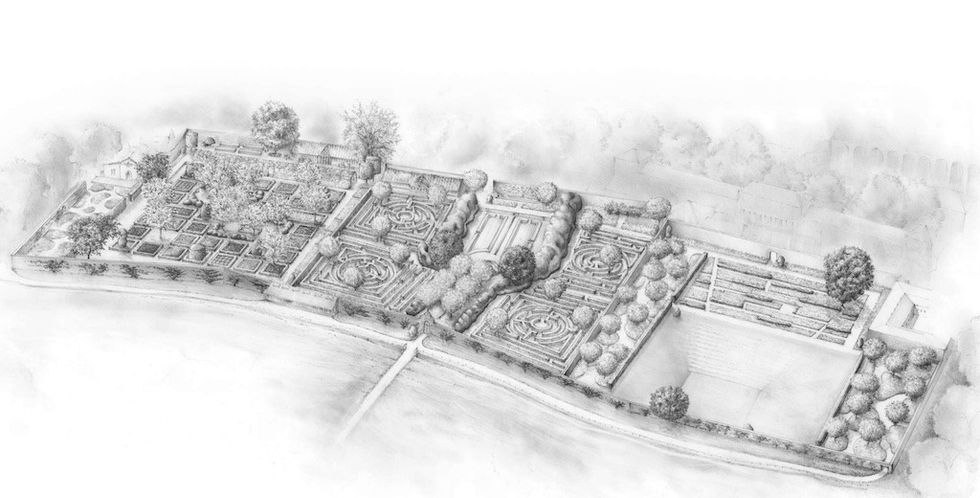
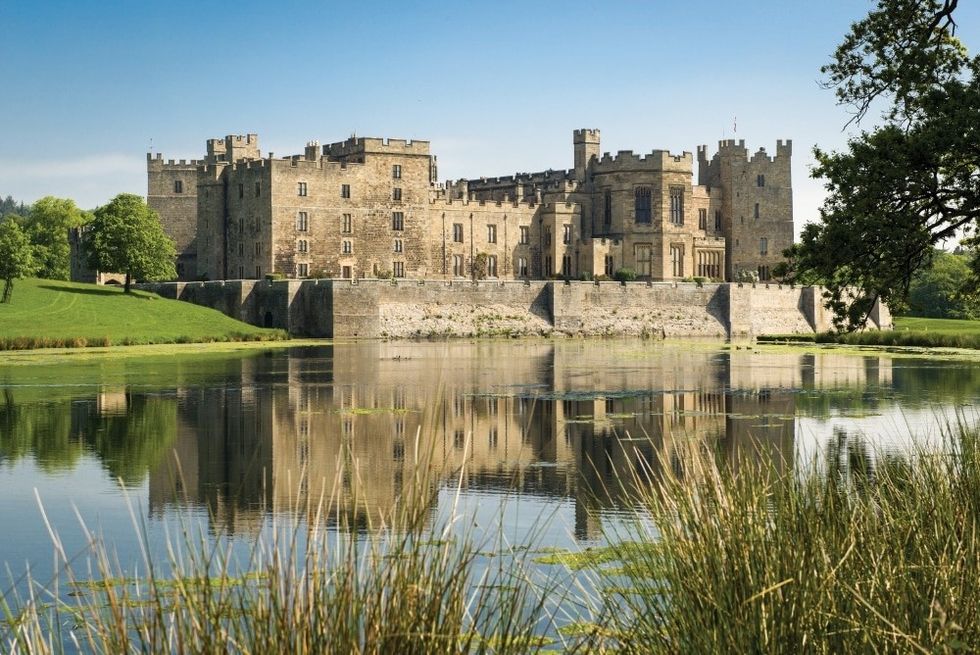



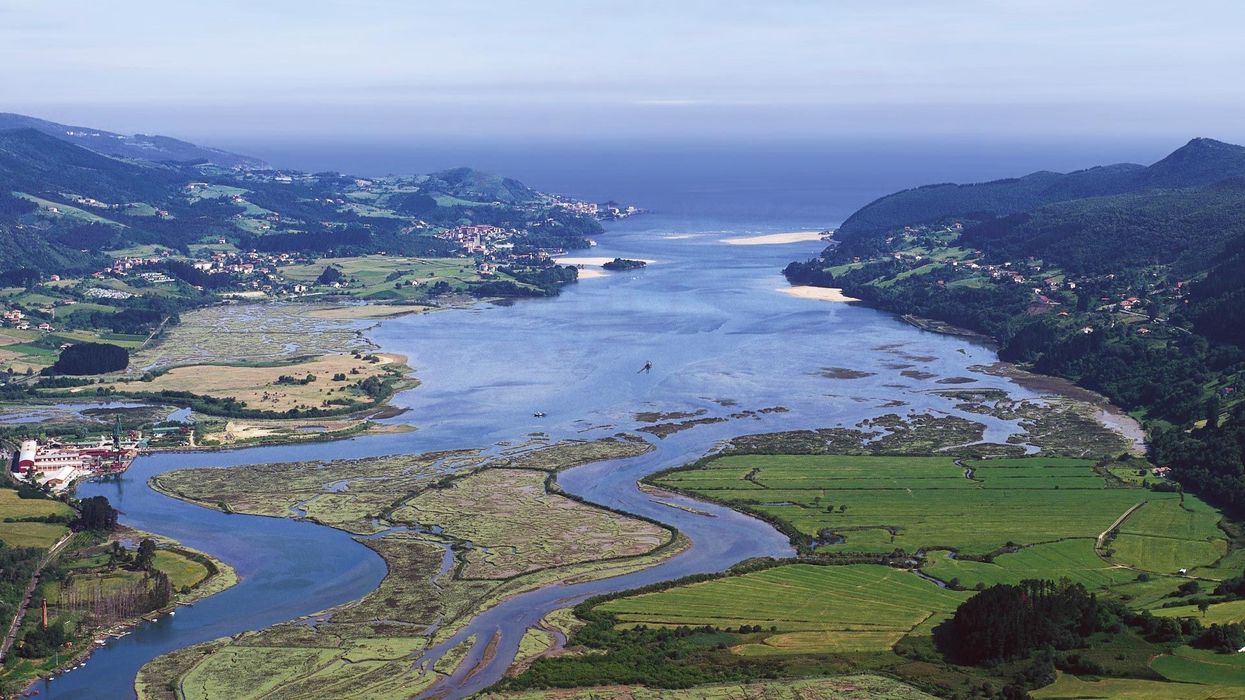
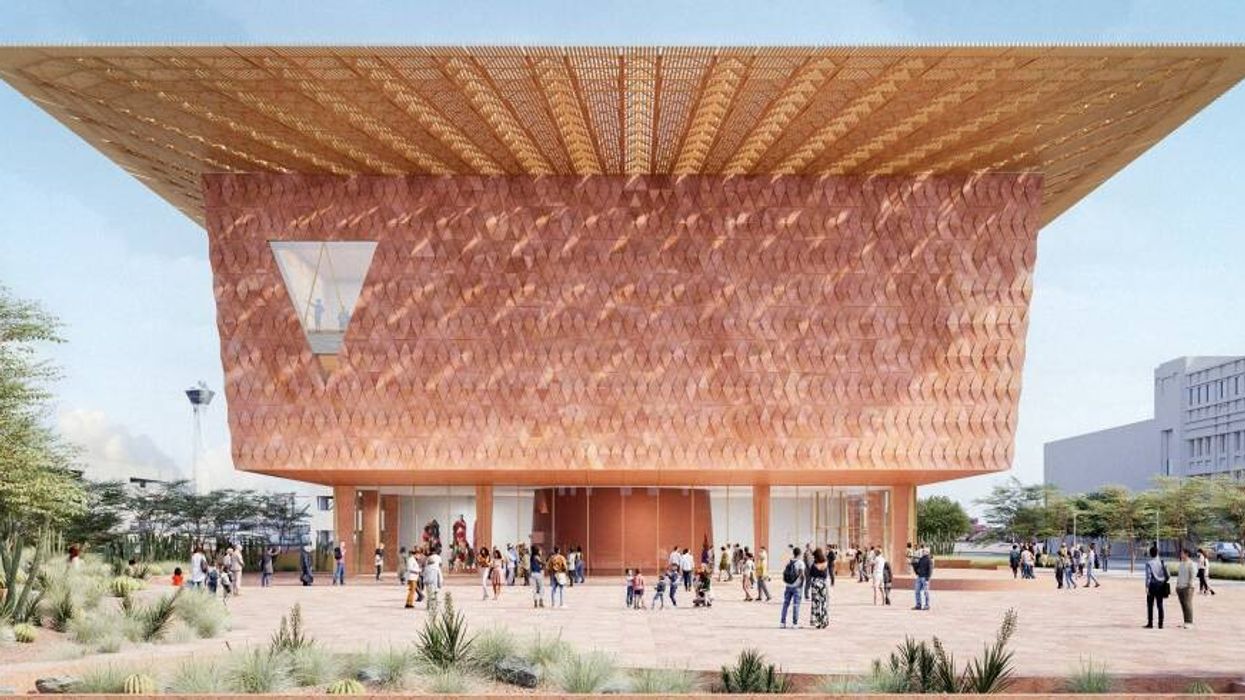

 TM Lim and Adam Wales
TM Lim and Adam Wales



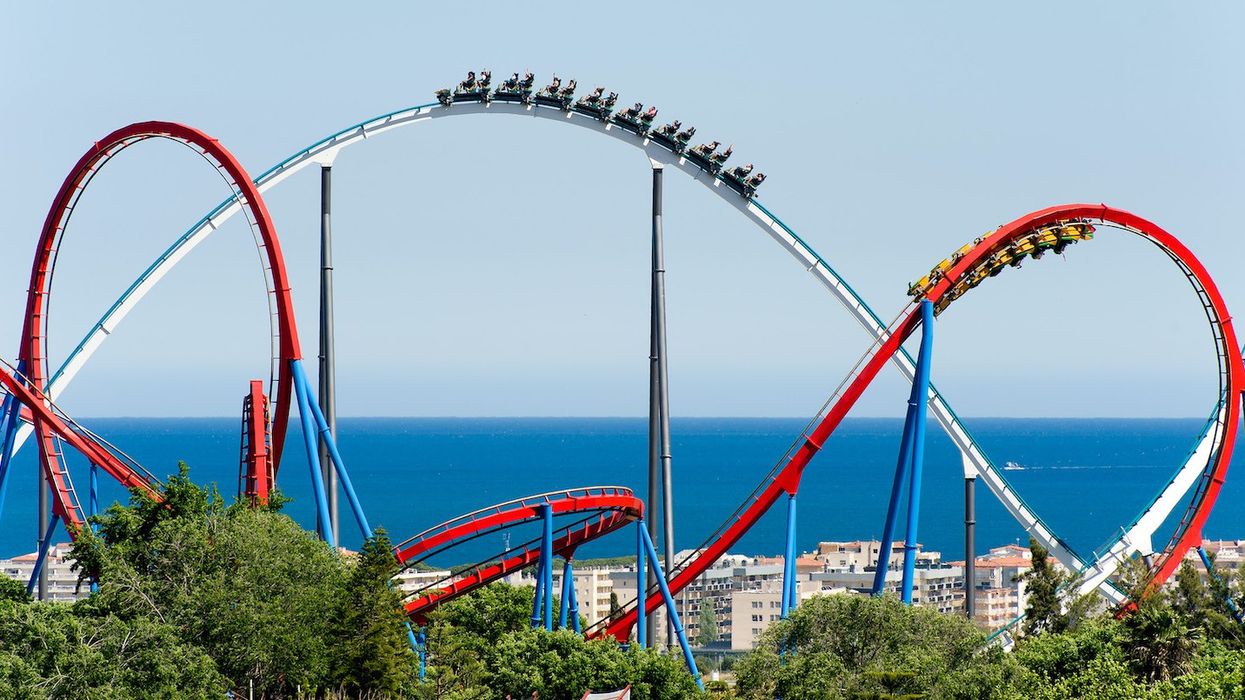



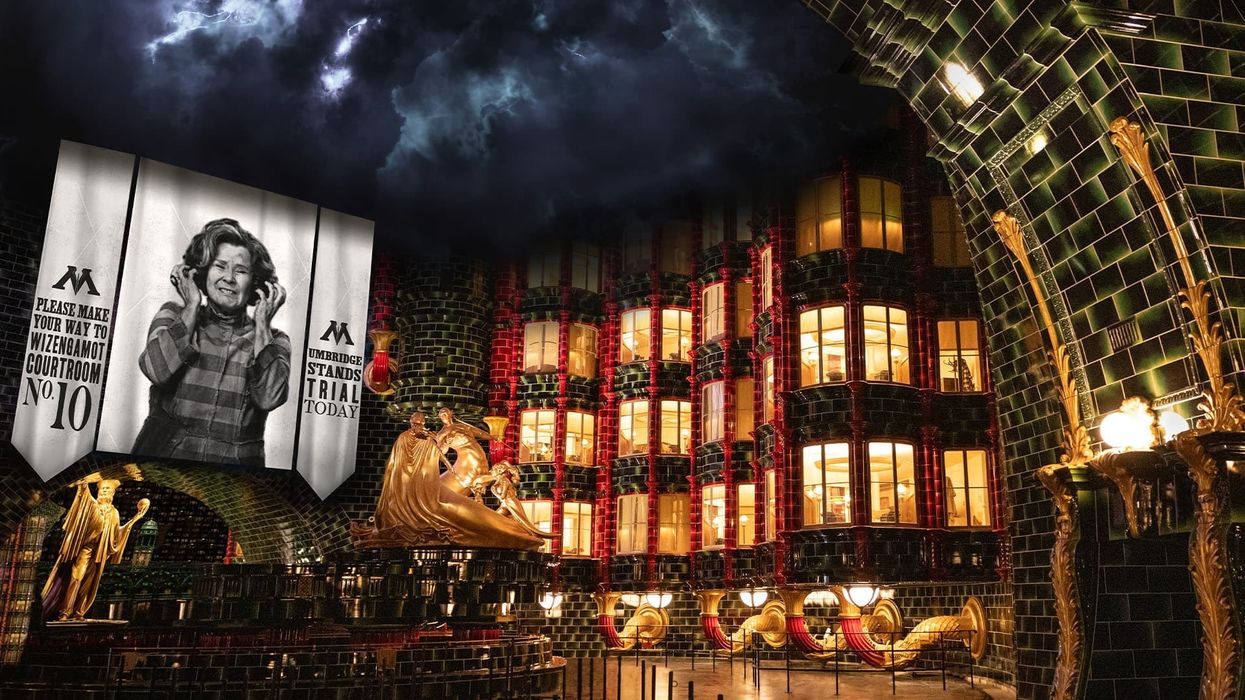

 Toby Harris
Toby Harris Hijingo
Hijingo Flight Club, Washington D.C.
Flight Club, Washington D.C.
 Flight Club Philadelphia
Flight Club Philadelphia Flight Club Philadelphia
Flight Club Philadelphia Bounce
Bounce Hijingo
Hijingo Bounce
Bounce
 Fernando Eiroa
Fernando Eiroa











 Nickelodeon Land at Parque de Atracciones de Madrid
Nickelodeon Land at Parque de Atracciones de Madrid Raging Waters
Raging Waters  Mirabilandia's iSpeed coaster
Mirabilandia's iSpeed coaster Parque de Atracciones de Madrid
Parque de Atracciones de Madrid Ferracci at the ribbon-cutting ceremony for Nickelodeon Land at Mirabilandia, with (left) Marie Marks, senior VP of global experiences for Paramount and (cutting the ribbon) Sabrina Mangina, GM at Mirabilandia
Ferracci at the ribbon-cutting ceremony for Nickelodeon Land at Mirabilandia, with (left) Marie Marks, senior VP of global experiences for Paramount and (cutting the ribbon) Sabrina Mangina, GM at Mirabilandia Tropical Islands OHANA hotel
Tropical Islands OHANA hotel Elephants at Blackpool Zoo
Elephants at Blackpool Zoo  Tusenfryd
Tusenfryd
 Andrew Thomas, Jason Aldous and Rik Athorne
Andrew Thomas, Jason Aldous and Rik Athorne







